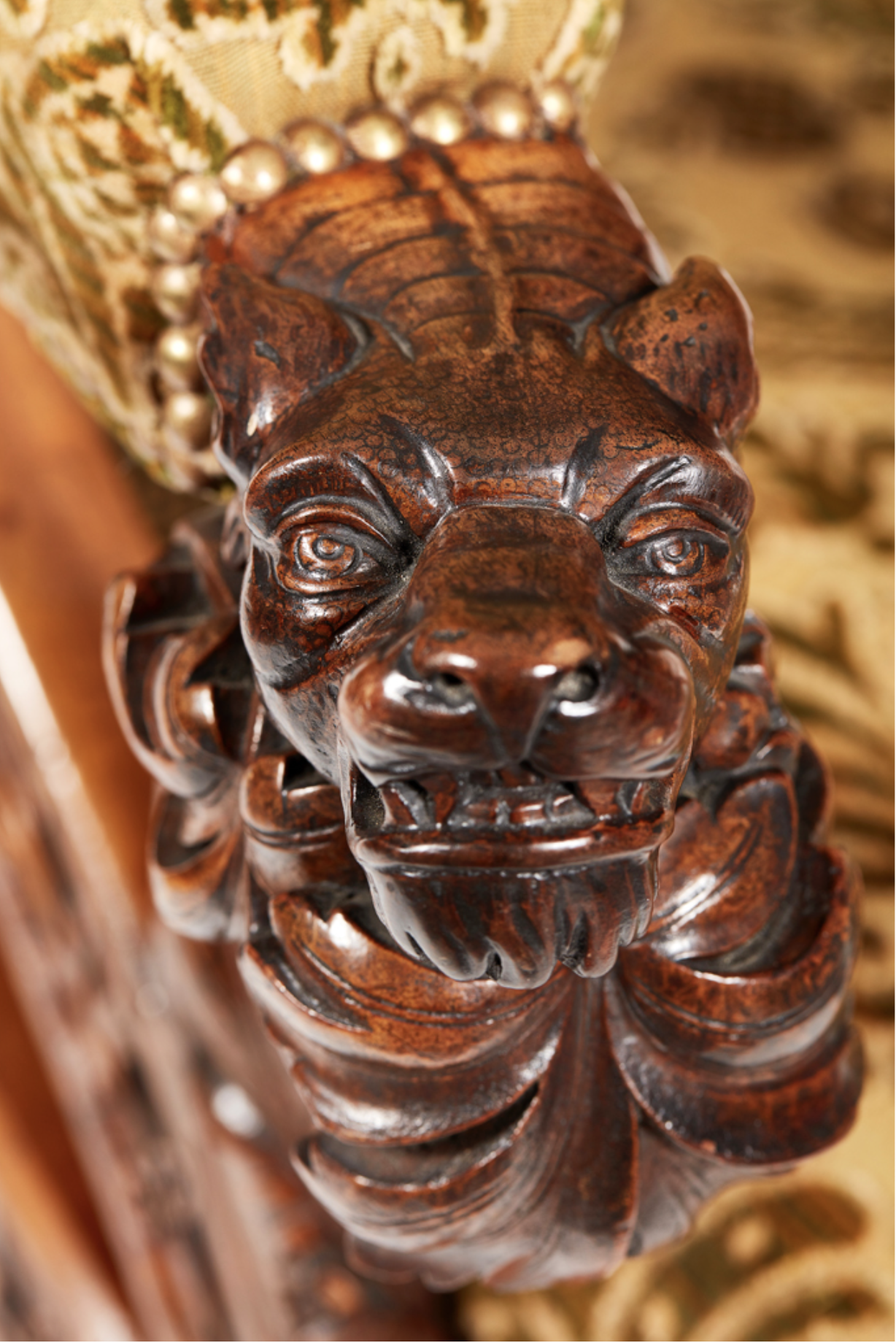Dimensions - 84cm wide x 120cm high x 65cm deep
Provenance: Paul Reeves; who at sold Lyon & Turnbull, 2019
Eugene Viollet le Duc (1814-1879) was famous for his restoration work on the cathedrals of Rheims, Amiens & Notre Dame, Paris, and also for his work on the city of Carcasonne, Avignon and the reconstruction of the Château de Pierrefonds for emperor Napoleon III. He wrote a lavish tome "Dictionnaire raisonne du mobilier francais de l'epoque carolingienne a la Renaissance" on medieval furniture; critics accused him that he added to much of his own idealistic ideas on the middle ages into his work This was part of his philosophy as an architect "to restore an edifice means neither to maintain it, nor to repair it, nor to rebuild it: it means to re-establish it in a finished state, which may in fact never have existed at any given time".
At Château de Pierrefonds, there is a group of seat furniture - five chairs and a double-sided bench - which are conceived in a remarkably similar form to this armchair with its trefoil arches, foliate carving and Historicist carving.




